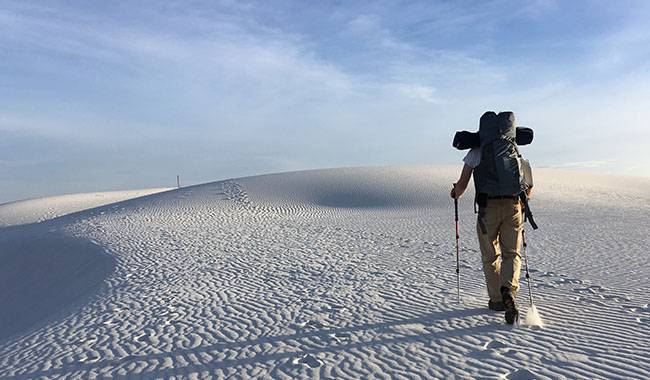
I have been hiking for 18 years. Of these, I have been a child and youth hiking instructor for 10 years: I lead classified hikes for schoolchildren, students, and adults. Anything goes 6.6 lbs (3 kg) of candy per person, 0.26 gals (1 liter) of shampoo, and even metal trays. Based on my experience, I will show you how to lighten your pack in order to be less stressed in the mountains, make the hike more fun, and be remembered by more than just the trail under your feet. You will learn more about How to Lighten Your Backpack While Climb by the LCN Outdoors article.
Why Lighten Your Backpack
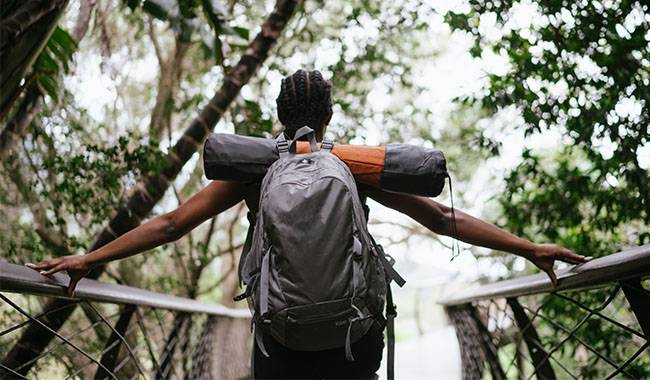
Walk more, see more
Short vacations are a harsh reality, but sometimes you want to do something big: walk 250 miles (402 km) and 15 mountain passes in 7-10 days. You need a lightweight backpack to make this happen.
Enjoy the sport
The famous American hiker Andrew Skurka hiked 6,835 miles (11,000 km) in one season, but there is a scale with two concepts: hiking and camping, i.e. when you walk and when you sit in camp. The longer the portion of the hike, the lighter the backpack should be, and the longer you are in camp, the less important the weight of your backpack will be.
Take care of your health
The weight of your backpack is especially important if the route is long and self-contained. If you’re hiking for a month, you simply don’t have the strength and health to carry a heavy backpack.
Save on luggage costs
If you plan to fly cheap or just frequently and put a 50 lbs (23 kg) backpack on a forklift belt every time, then you’re paying $30-$50 per flight. This is the same if you find a last-minute deal or a very cheap flight with no luggage. With a lightweight backpack, you can buy food on the spot and all your equipment can fit in your carry-on baggage allowance.
Combine trekking/climbing with free time
For example, when traveling in Asia, you could travel from Cambodia to Thailand and then to Malaysia, taking two three-day jungle treks along the way. A lightweight backpack is essential on such trips.
Faster adaptation to life in the mountains
A person who goes to the mountains comfortably for the first time will want to come back. My first hike was with a 260 lbs (118 liters) backpack, a sleeping bag that weighed almost 6.6 lbs (3 kg), and as insulation, I brought a one-piece construction jumpsuit and a knitted sweater with reindeer. In addition to this, I carried a 3-gals (11.3 liters) water bottle for a group of 48 people. All of this weighed 44 lbs (20 kg). It’s tough, it’s hard work, but I love it and I’m hanging in there. However, for many people, a trek like this may be their last.
Make room for chilling
On weekend hikes, my backpack, including food, weighs no more than 13 lbs (6 kg). It was easy to walk, so on top of that, I brought a folding chair. It weighs 450 grams and I can afford it. If you fancy this, you can reduce the weight of your backpack to 7.7 lbs (3.5 kg) and still bring a cushion or other amenities. Many photos of light hikers from the Appalachian Trail in the U.S. showgirls with their favorite teddy bears, or bearded uncles with outdoor folding chairs but carrying 66 lbs (30 liters) backpacks. An acquaintance of mine used Snickers to calculate the weight of his gear: he sawed off the handle of his toothbrush, took shorter socks – you can have an extra Snickers, etc.
Walking in the mountains at any age
7 and 70-year-olds have a common problem: neither can carry much nor walk fast with a heavy backpack. School-age children are especially “lucky”: parents like to add 11-13 lbs (5-6 kg) to the total weight of the backpack, in the form of candy, extra clothes, utensils, and anything else “just in case”. For example, one mother gave a boy an aluminum tray for a hot meal on the train – and the poor boy wore it the whole way.
Tip: If your teenager has been camping before, he or she probably knows what to pack in a backpack. So don’t overload it with unnecessary stuff and try to keep it out of the way.
What is the Weight of the Backpack?
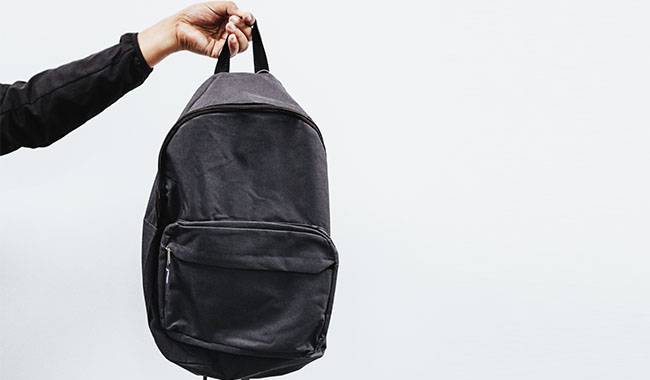
A. Personal equipment
This is everything you personally need: a backpack, sleeping bag, pad, clothes, shoes, utensils, and a personal iron. The heaviest part is the backpack and the sleeping system (sleeping bag and pad). Personal equipment makes up more than half of the weight of your backpack, so it is important to reduce its weight first.
B. Public equipment
Tent
Oddly enough, not every camping trip requires a tent: somewhere you can get by with just a tent or a hammock and an awning. Not all places have glaciers, low temperatures, hurricanes, or, on the contrary, mosquitoes, heat, and other things. In areas with good infrastructure, you can sleep in a shack or rent a tent, which means you don’t need to carry shelter at all. For example, the famous “Alpine Trek” alpine route is run in this way.
Group cooking utensils
There is a tradition in our country to go camping as a large group. The larger the group, the larger the utensils, often twice as large as necessary. At student gatherings, you can see kans with a volume of 1.6-3.2 gals (6-12 liters). On the one hand, this optimizes the amount of equipment, but on the other hand, it significantly increases the weight of the equipment. If you have a large container, it should be made of lightweight materials: thin steel, aluminum, and titanium.
Burners and cooking systems
A burner is almost always needed in the mountains, except in forested areas or subalpine areas where you can use wood chip stoves. If it’s not winter camping and you have to bring a heavy liquid fuel burner, then choose something lighter.
The lightest burner in our LCN series is very lightweight – you can use it not only to boil water but also to make a full meal.
First aid kit
The classic thing about camping is that the first aid kit is close to the size of an ambulance bag. However, unless you have a real doctor in your group that can use this, it is almost useless. Assemble a first aid kit that contains only those medicines that you know how to use. For example, if no one in the group knows how to give an injection, there is no need for ampoules of medication. Plus part of the first aid kit can be made personal: bandages, plasters, vitamin C, fever reducers, etc.
Group climbing equipment
This includes ropes, hooks, shims, rigs, station rings, extractors, hammers, etc. It is usually not possible to reduce the amount of iron as this would increase the level of danger or require more training and skill.
C. Consumables
This is everything that will leave your pack when you go.
Food
It is consumed the fastest, so it only makes sense to save on long trips. Foods with high calories (lard, chocolate, etc.) and freeze-dried foods help save weight.
Fuel
In the mountains there is often nothing to burn, so you must carry fuel with you. In 90% of cases, it is gas, less often it is liquid fuel. The best liquid fuel is Kalosh gasoline, which works even better than aviation gasoline in the mountains. There have been instances where aviation paraffin did not burn at altitude: it burned when the tent vestibule was opened and went out immediately after closing it. But it should work at an altitude of 7.5 miles (12,070 meters).
Sunscreen
It must be used intensively and thickly in the mountains, otherwise, it will burn more easily than in the tropics. To save weight, you can take one tube for 2-3 people or use the concentrated cream with the highest protection factor – you will need less.
Soap, paper, personal care products
All of these are consumed quickly, though more slowly than food. Regular soap can be replaced with light leaf soap, shampoo only in samples or sachets, but it’s best not to skimp on toilet paper. I knew a team who counted toilet paper in squares and then they had the unforeseen “mountain sickness” where they used only these squares in alpine meadows …… The results were not good.
Expendable rings, hooks, clips, and other things
All the things you will leave at the pass or summit when organizing insurance. Even expensive grandchildren are sometimes left behind if they can’t get them out, or if there is nothing else to make a stand. It is also not recommended to save weight at the expense of consumables, but it is worth studying the descriptions of the passes and peaks you will be passing in advance. Typically, the number of consumables for a jump can be calculated as the number of ropes used for descent plus 2-3 ropes for emergencies.
Why Do People Carry Heavy Backpacks?
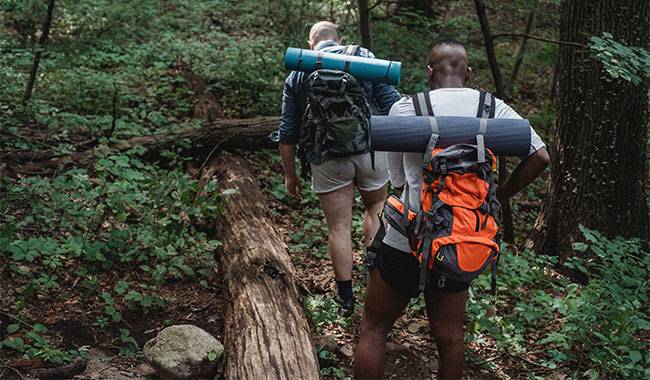
A. Travel traditions and deep impressions
Some European countries are very much cool tourist schools and strongly impressed. Those rules that were set back in Europe are still valid today. For example, according to early European techniques, the chest harness had to be blocked with a 10 mm diameter rope. But this requirement was only enforced in competitions, while in camping lighter and equally strong slings could be used, which were used for loops. Such a system is not only lighter, but also more comfortable to walk on, which increases the safety of participants when moving over difficult terrain. Locking loops and dynamic “nines” instead of “tens” are not only acceptable but are used successfully by many climbing clubs and climbers.
B. Insufficient knowledge of the area and conditions
Before you go up the mountain, you should study reports, read forums, ask people, go to lectures, watch videos, etc. beforehand. If you know the area well, you will stop being afraid of the unknown and bring extra equipment with you. For example, let’s take the pass on the Terskey Alatau ridge, which is about 2.5 miles (4,000 meters) high – it looks very high and scary, but in fact, local climbers walk there in flip-flops and Europeans wear light tracks. Sturdy hiking boots are useless there.
C. The extra “iron” in simple travel
Many donkeys carry Jumars, a bunch of ropes and traps, etc. without a single pass needing them. If the purpose is training – this is one thing, but if the chosen category of hiking will not be vertical walls and climbs, then no extra “iron” is needed. Therefore, it is important to know the conditions of the hike in advance. If you want to train, organize an iron pitch to the alpine camp, if available in the area.
D. No experience in the use of lighting equipment
Have you ever slept under a tent in the mountains? I have, and I know it is possible. However, most people find it hard to imagine what that would be like. What if it gets cold? Does it rain? It’s hard to cross the mental line and replace a sturdy 11 lbs (5 kg) tent with a lightweight one. But such a tent is not needed everywhere, for example, in the Rockies or Appalachians, where one can sleep comfortably in a tent.
E. Courage of the Brave
This quality allows you to bring more gear, help a girl, bring 0.26 gals (1 liter) of shampoo and 1 gal of water to wash your hair, etc. And this is not a story.
A friend of mine once did an internship with geography students in the high mountain region of the Rocky Mountains. These people had very little field experience and had never been to the mountains. They went very slowly, very hard, and it was not good for everyone. My friend said, “That’s it – let’s stop, unpack, and let’s see what you’ve brought. The first girl brought a bottle of 0.4 gals (1.5 liters) of shampoo and the second participant brought a bottle of 1.3 gals (5 liters) of water to wash her hair during the day’s walk! She said.
F. Desire to embrace the vastness of the route
Classic scenario: “Now the kids and I are going on a Category 3 difficulty hike that ends with us climbing the Rockies (the mainstay of the Cordillera system in North America). Surely you’ve heard stories like this? I only know of one person who managed to do it. Not that it’s impossible to do this, but when you do the “three things” for about 12-14 days, you’ve walked on mountains, walked on glaciers, gotten wet, dried out, had to do rescues, carried stuff for other people, and finally – now we’re going to the Rockies!”. And you’ve had some Ketchum, you’ve had some beer, and you don’t feel like going anywhere. But for the Rockies, you dragged your cat and duvet the whole way. Conclusion: Don’t kid yourself and calculate your strength correctly.
And to avoid lugging all your trekking poles and downhill gear around, you can do an ascent: leave all the gear you don’t need somewhere in the main part of the route and pick it up before you ascend. We show you how to do it right in our article about climbing.
G. Young leader syndrome
When a person goes hiking for the first time or to a new area, he or she feels relieved (and rightly so): he or she forces the participants and himself or herself to take too much gear. The young leader himself bears the brunt of this burden. I came up with it, so I took it with me.
H. Unable to buy light equipment
For economic reasons, or because normal lightweight equipment is simply not available in sports stores in small European towns. Although there are usually artisans everywhere who sew their own – I’ve done that. And outdoor stores supply equipment to many areas in all regions of Europe.
How to Reduce the Weight of the Backpack
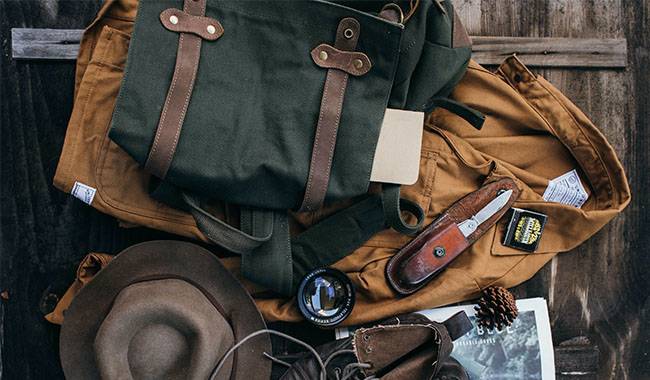
Easy solo hike along the Dillelagh Mountains – 6.5 days 80 miles (130 km). In the beginning, the pack with 2.2 lbs (1 kg) battery weighed 28 lbs (12.7 kg).
A. More hiking
How do you prepare for the mountains when you are not in them? You should do a lot of hiking on the weekends. Even if you don’t have the opportunity to learn how to crampon on a glacier or walk and scramble in Kulluhm National Park, it will still be good for you. You’ll get a feel for what you need and what you can set up or replace with lighter equipment.
B. Planning the route
If the route is well planned and you know exactly what to expect, you won’t need extra equipment “just in case” or extra days of food and fuel supplies. The more predictable the trip, the fewer “contingencies” there will be.
C. Balance everything
In order to reduce the weight of your pack at the expense of your personal and public equipment, you need to carefully weigh everything. Socks, jacket, favorite fleece, pants, and even a spoon. Weigh and compare – what is lighter, works better on a hike, and should be in your backpack.
Example 1: Wool reindeer socks weigh 105 grams and Primaloft long socks (slipper-socks made of modern synthetic PrimaLoft insulation) also weigh 105 grams. The weight is the same, but the stockings are five times warmer, take up less packing space, breathe better, and stay warm when wet. Reindeer socks are the clear losers.
Example 2: A standard men’s wool sweater weighs about 350 grams and a down jacket weighs the same or less. But the down jacket can be worn over thermal underwear at 14 °F (-10 °C), while the fleece is already cold at 32 °F (0 °C).
Example 3: A titanium spoon weighs 16 grams and a steel spoon that my grandmother stole from the cafeteria when she was a child weighs 116 grams. A regular spoon is 10 times heavier.
D. Change your clothes less often
Bringing a spare pair of shoes, a spare sweater, a couple of T-shirts, and a dozen socks is a classic travel move. It all takes up space in your backpack and weighs a lot.
There are two ways to help reduce the amount of “shifting”.
- Wash your clothes on the trail – even in bad weather, things dry quickly on the mountain.
- Wash more often – for example, if the route is designed for 10 days and you haven’t washed once in that time, you’ll feel about the same in a clean t-shirt as you do in a dirty one, so any sense of that combination will be lost. It’s easy to bring two T-shirts: one to wash – and the other to sleep or go to bed in.
E. Excluding “half-groups” of equipment
Some things are needed by the team, but not by everyone, like knives. A team of three needs a knife, a team of 12 needs a knife. Sure, you can have two knives so that two people can cook at the same time, but you can cut the sausage four times while boiling water for a large group. The same can be done with a multi-tool, or even an ice tool – take one for each team and use the second as the main ice axe for one of the participants. If experience allows, the first on-ice tool can also be used as an ice axe (e.g. for the leader).
F. Use one thing to perform multiple functions
Multifunctionality is the primary thing to consider. It serves the following purposes.
- All-purpose lid – to make water boil faster.
- Cutting board.
- A “pillow” under the head.
- If the backpack does not have a backrest in the anatomical sense, the elements of the backpack frame should be used.
- Even snow anchors on difficult trails (but this is for professionals).
There are many such multifunctional items. For example, trekking poles can be used as a support for an awning, stakes for a tent, and a tripod for a camera (there are even special tripod poles). An ice axe with a hammer on the back can replace a heavier rock hammer.
Tip: The advanced level of ease is the “fast and easy” of winter. We have an entire textbook on this topic, “Super Lightweight Winter Travel”. Even for experienced hikers, this book will help you revisit your equipment choices and hiking formats.
The Order in Which Equipment is Mitigated
Order: sleeping bag – clothes – backpack – iron – utensils – everything else.
The order should be exactly that. You don’t need to start with a backpack or something as small as a spoon and toothbrush. Since a backpack of at least 220 lbs (100 liters) is needed for a fierce 3-pound sleeping bag, if you take a lighter sleeping bag and change clothes, you can buy a 110 lbs (50 liters) backpack where it all fits easily. In addition, modern backpacks allow you to keep your gear outside, including some of your food.
For example, the outdoor backpack has a bottle of buckwheat in each of the side pockets. Each bottle weighs 4.5 lbs (2 kg): that’s up to 100 grams per serving, so there’s enough buckwheat for 40 meals. With so much food out there, a 220 lbs (100 liters) backpack is clearly unnecessary.
The most important thing is not to deceive yourself and your companions about your motivation for hiking. Do not confuse mountain recreation with sports routes, which require different equipment and different travel speeds.